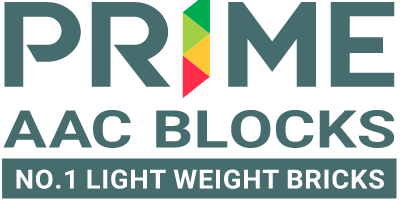
Types of AAC Blocks
Introduction: AAC (Autoclaved Aerated Concrete) blocks are a popular choice for construction due to their lightweight, insulation properties, and eco-friendliness. They offer a versatile solution for various construction needs. Various types of AAC blocks cater to distinct construction needs.
Here are some common types of AAC (autoclaved aerated concrete) blocks:
Regular AAC Blocks: These are the standard AAC blocks used in construction projects. They are lightweight and offer good thermal insulation properties, making them energy-efficient.
Fly Ash AAC Blocks: Made with fly ash, a byproduct of coal combustion, these blocks are eco-friendly and possess similar properties to regular AAC blocks. They contribute to sustainable construction practices by utilizing industrial waste.
Foamed Concrete AAC Blocks: These blocks have a lower density compared to regular AAC blocks, making them even lighter. They are often preferred for applications where weight is a critical factor, such as in precast panels and non-load-bearing walls.
High Strength AAC Blocks: Engineered to have higher compressive strength compared to regular AAC blocks, these are suitable for load-bearing applications in high-rise buildings. They ensure structural integrity and safety in tall construction.
Fire Resistant AAC Blocks: Specially formulated to offer enhanced fire resistance, these blocks provide added safety in buildings where fire hazards are a concern. They comply with stringent fire safety regulations and standards.
Soundproof AAC Blocks: These blocks have enhanced sound insulation properties, effectively reducing noise transmission. Innovation drives the development of different types of AAC blocks.They find applications in buildings located in noisy environments or where soundproofing is necessary for occupant comfort.
Thermal Insulated AAC Blocks: These blocks incorporate additional insulation materials during manufacturing, resulting in improved thermal insulation properties. They help maintain comfortable indoor temperatures while reducing energy consumption for heating and cooling.
Conclusion: Each type of AAC block presents unique characteristics and benefits, catering to diverse construction needs and requirements. By offering a range of options, AAC blocks contribute to sustainable, efficient, and safe building practices. So this i
